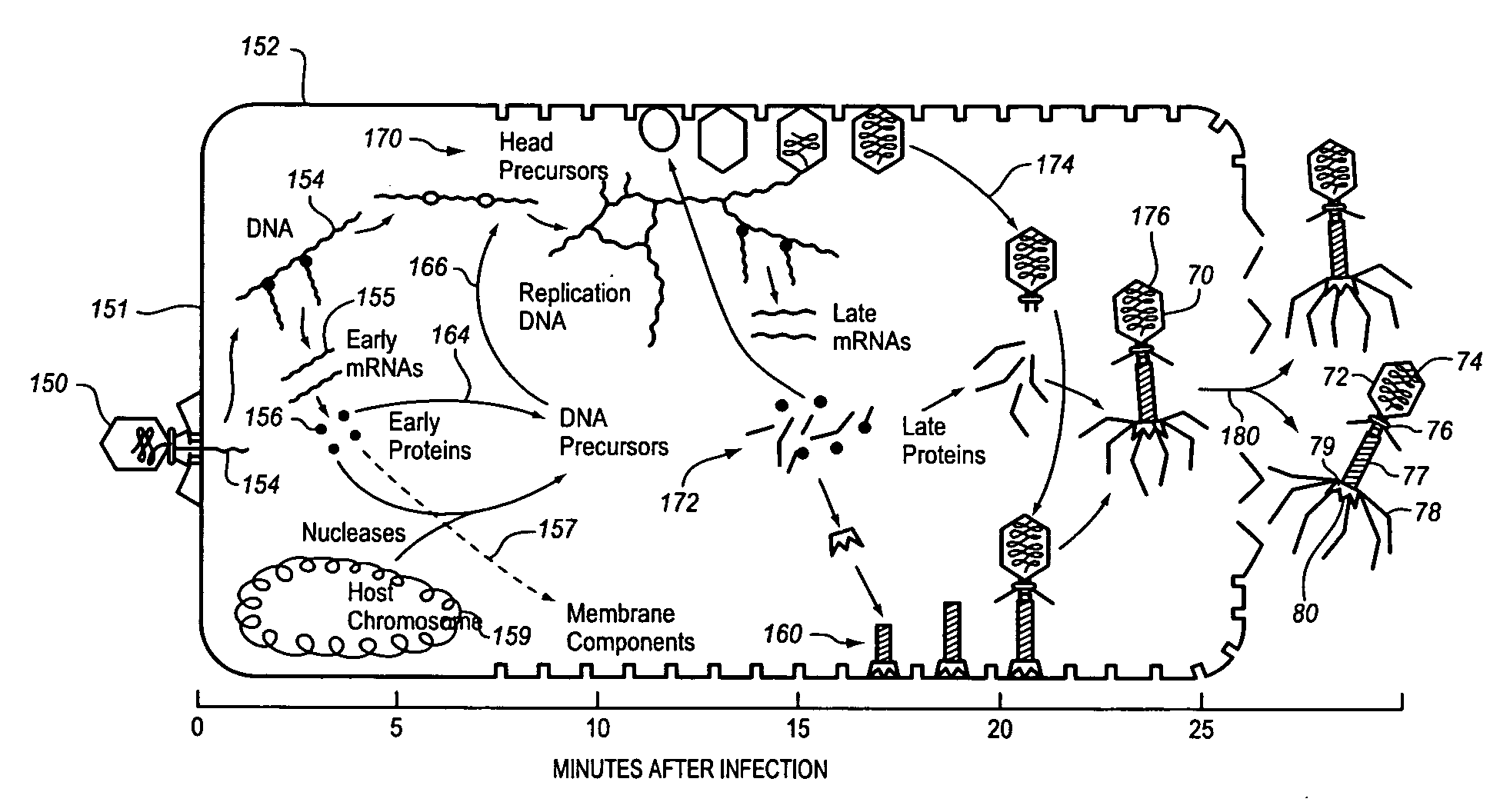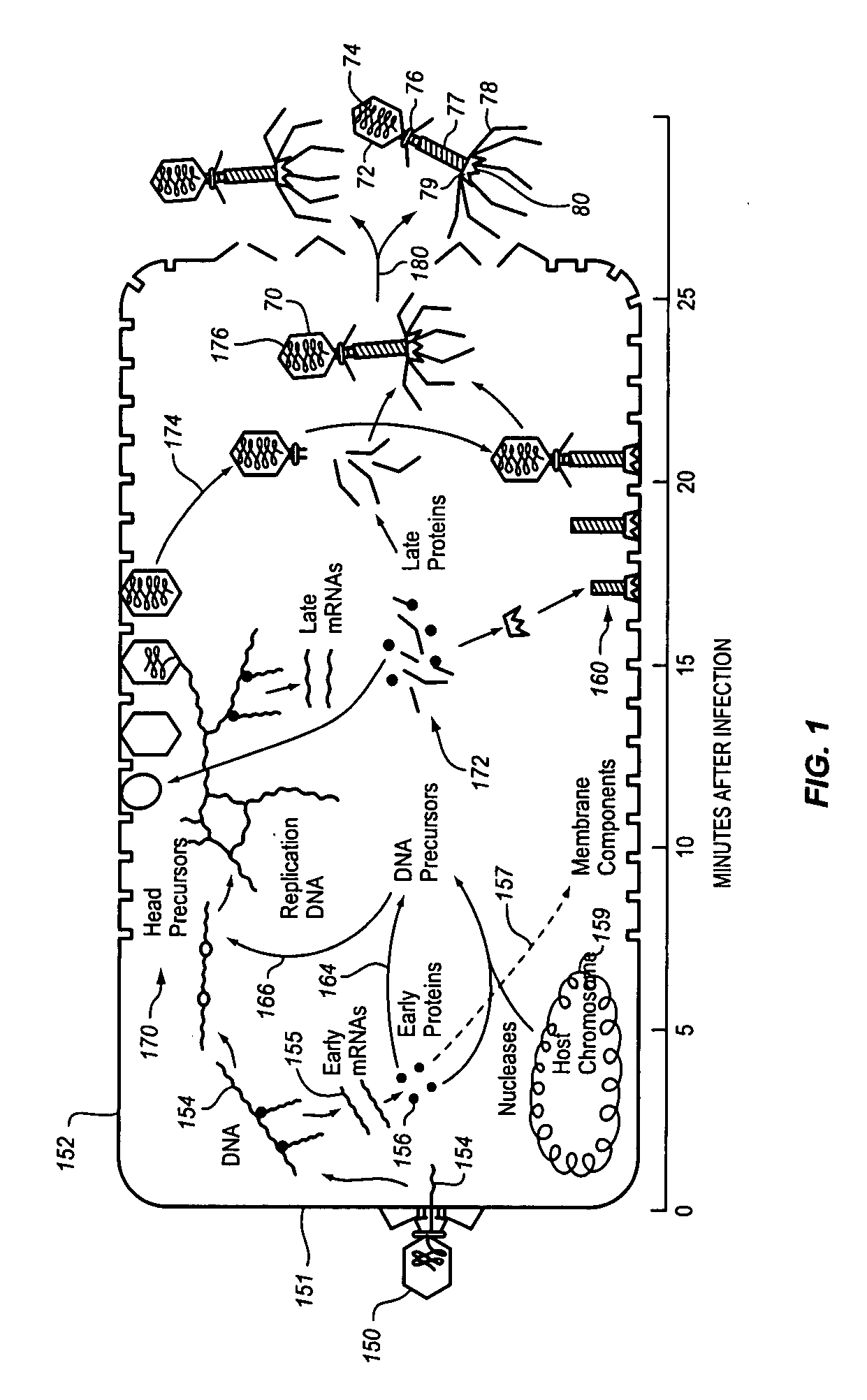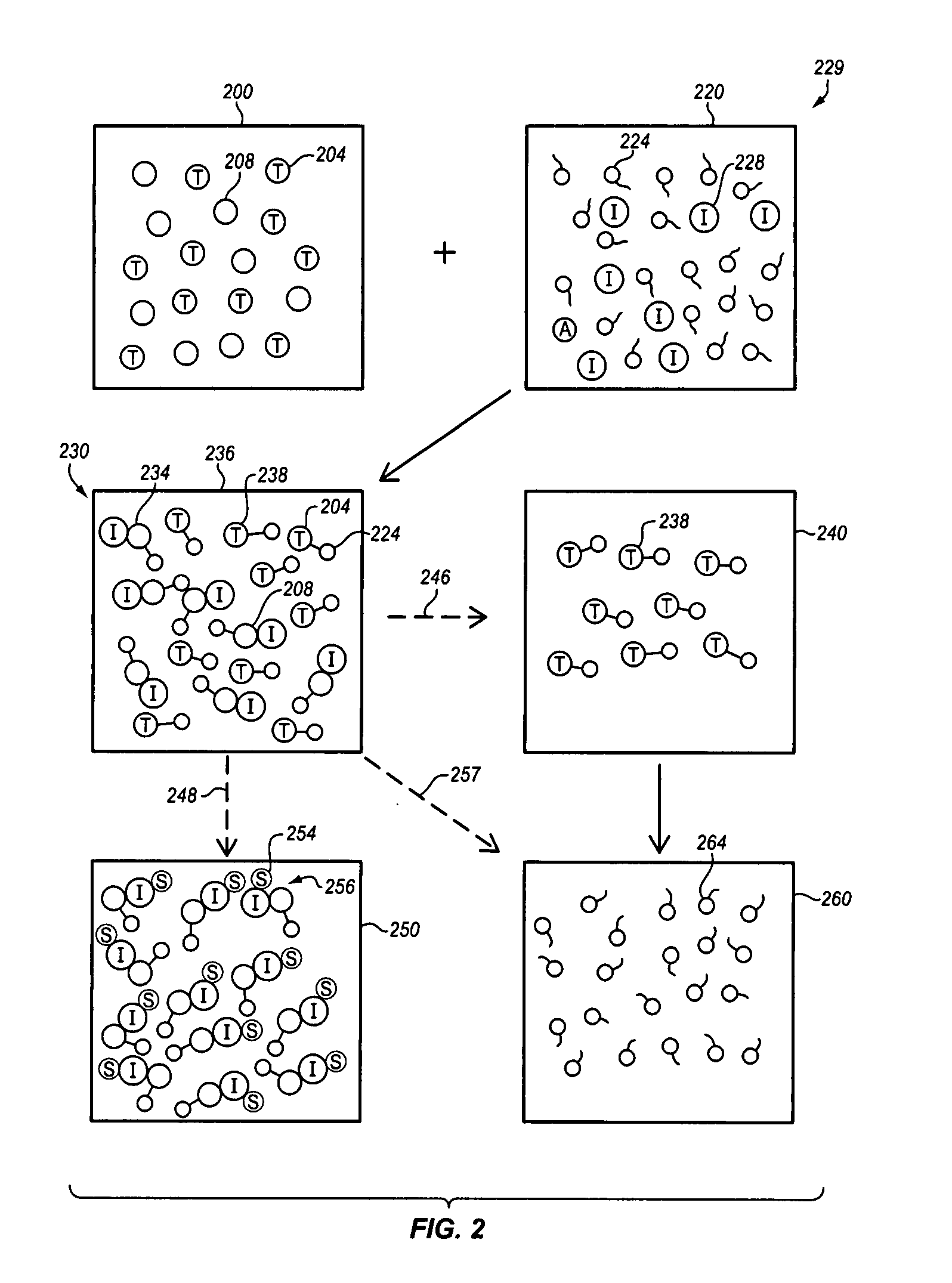Method and apparatus for enhanced bacteriophage-based diagnostic assays by selective inhibition of potential cross-reactive organisms
a technology of phage attachment and inhibitory assay, applied in the field of identification of microscopic living organisms, can solve the problems of difficult finding or developing bacteriophage with those characteristics, and the specificity of bacteriophage with high level sensitivity is often not sufficient, so as to inhibit the growth of potentially cross-reactive bacteria, inhibit phage attachment or replication, and facilitate rapid diagnosis
- Summary
- Abstract
- Description
- Claims
- Application Information
AI Technical Summary
Benefits of technology
Problems solved by technology
Method used
Image
Examples
Embodiment Construction
[0015]The invention provides methods and apparatus to enhance the detection of microorganisms using bacteriophage. As known in the art, bacteriophage generally are specific to a particular microorganism; however, they often demonstrate some low-level cross reactivity against organisms that are closely related. Generally, bacteriophage are used to detect the presence of a target microorganism in a sample by combining bacteriophage specific to the target microorganism. The bacteriophage-exposed sample then is incubated by providing conditions sufficient to allow bacteriophage to attach to or replicate in said target microorganism. After incubation, the bacteriophage-exposed sample is assayed to detect the presence or absence of a bacteriophage marker to determine the presence or absence of said target microorganism. Successful phage attachment or replication in a sample indicates the presence of the target microorganism in the sample. The present invention addresses the fact that bact...
PUM
| Property | Measurement | Unit |
|---|---|---|
| Time- | aaaaa | aaaaa |
| cross reactivity | aaaaa | aaaaa |
| concentration | aaaaa | aaaaa |
Abstract
Description
Claims
Application Information
 Login to View More
Login to View More - R&D
- Intellectual Property
- Life Sciences
- Materials
- Tech Scout
- Unparalleled Data Quality
- Higher Quality Content
- 60% Fewer Hallucinations
Browse by: Latest US Patents, China's latest patents, Technical Efficacy Thesaurus, Application Domain, Technology Topic, Popular Technical Reports.
© 2025 PatSnap. All rights reserved.Legal|Privacy policy|Modern Slavery Act Transparency Statement|Sitemap|About US| Contact US: help@patsnap.com



